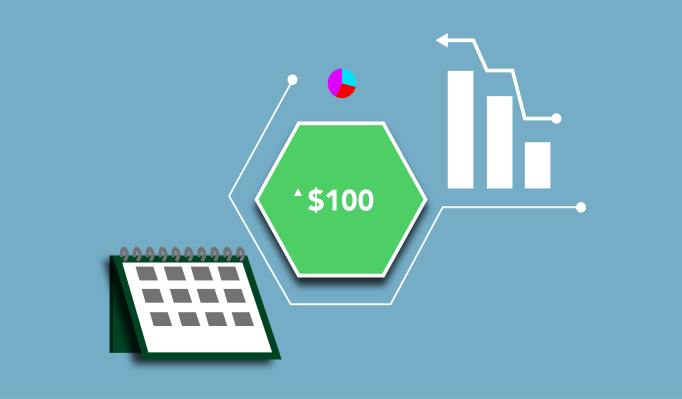For a long time, “revenue” seemed to be a taboo word in the startup world. Fortunately, things have changed with the rise of SaaS and alternative funding sources such as revenue-based investing VCs. Still, revenue modeling remains a challenge for founders. How do you predict earnings when you are still figuring it out?
The answer is twofold: You need to make your revenue predictable, repeatable and scalable in the first place, plus make use of tools that will help you create projections based on your data. Here, we’ll suggest some ways you can get more visibility into your revenue, find the data that really matter and figure out how to put a process in place to make forecasts about it.
You need to make your revenue predictable, repeatable and scalable in the first place, plus make use of tools that will help you create projections based on your data.
Base projections on repeatable, scalable results
Aaron Ross is a co-author of “Predictable Revenue,” a book based on his experience of creating a process and team that helped grow Salesforce’s revenue by more than $100 million. “Predictable” is the key word here: “You want growth that doesn’t require guessing, hope and frantic last-minute deal-hustling every quarter- and year-end,” he says.
This makes recurring revenue particularly desirable, though it is by no means the be-all-end-all of predictable revenue. On one hand, there is always the risk that recurring revenue won’t last, as customers may churn and organic growth runs out of gas. On the other, there is a broader picture for predictable revenue that goes beyond subscription-based models.
Ross and his co-author, Marylou Tyler, outline three steps to predictable revenue: predictable lead generation, a dedicated sales development team and consistent sales systems. They wrote an entire book about it, so it would be hard to sum it up here. So what’s the takeaway? You shouldn’t base your projections on processes and results that aren’t repeatable and scalable.
Cross the hot coals
In their early days, startups usually grow via word of mouth, luck and sheer hustle. The problem is that it likely won’t lead to sustainable growth; as the saying goes, what got you here won’t get you there. In between, there is typically a phase of uncertainty and missed results that Ross refers to as “the hot coals.”
Before the hot coals, predicting revenue is vain at best, and oftentimes impossible. I, for one, remember being at a loss when an old-school investor asked me for five-year profit-and-loss projections when my now-defunct startup was nowhere near a stable money-making path. Not all seed investors expect this, so there was obviously a mismatch here, but the challenge is still the same for most founders: How do you bridge the gap between traditional projections and the reality of a startup?
This is where data comes in — and yes, even at the earliest stages, startups do have useful data. A previous Extra Crunch article on revenue-based investing highlighted three sources for visibility into revenues. According to VC Ali Hamed:
-
SaaS business models, which mean recurring revenue;
-
CAC:LTV ratios and other calculable analytics — which allow lenders to understand what amount of revenue a marketing input will generate; and
-
Data from platforms like Shopify, Airbnb, Spotify, Facebook, YouTube or any other platform that gives [insights into] a digital business’ future revenue.
Corral your data …
When the data you would like to analyze is only available on third-party platforms, the first step is to get it into your data warehouse. If you’d like to do it yourself, there are solutions that greatly facilitate this process, such as Fivetran, Segment and Stitch, with pre-built connectors that don’t require advanced engineering skills.
For instance, Stitch offers integrations that let you extract from sources such as Recurly, Shopify, Square, Stripe and Zuora and load it into the destination of your choice, whether that’s a data warehouse or data lake.
The next step can be handled with SQL. For example, if your goal is to model subscription revenue, you can follow this monthly recurring revenue (MRR) playbook created and shared on GitHub by Fishtown Analytics, the makers of dbt. A blog post details how to use the playbook, noting that “a data analyst at a SaaS company or an e-commerce business with a subscription component” will have to analyze metrics like churn, upgrades and downgrades.
Once you have analyzed your MRR data, you can simply plug it into one of several publicly available forecasting tools, such as those from Chargebee, Baremetrics or Zoho.
And maybe skip spreadsheets
Note that Chargebee and Baremetrics are also two of several solutions that you can use for the entire process if you’d rather skip the extract, load and transform (ELT) data steps described here. In addition, you will also find a series of paid tools and services specifically dedicated to the forecasting step; or, at the other end of the spectrum, you might instead decide to do your own projections in Excel.
However, if your company is a scaleup, you will soon find out that there are limitations to financial forecasting processes that rely too heavily on spreadsheets and manual updates. This is where financial planning and analysis (FP&A) players such as Jirav and Planful can help. They were recently joined by YC W21 alum Abacum, which puts special emphasis on collaboration and whose early clients include Jeff, Seedtag and Typeform.
No matter which option you choose, you will discover that having revenue that you can predict is empowering and gives you lots of options whether you decide to bootstrap or to fundraise.
